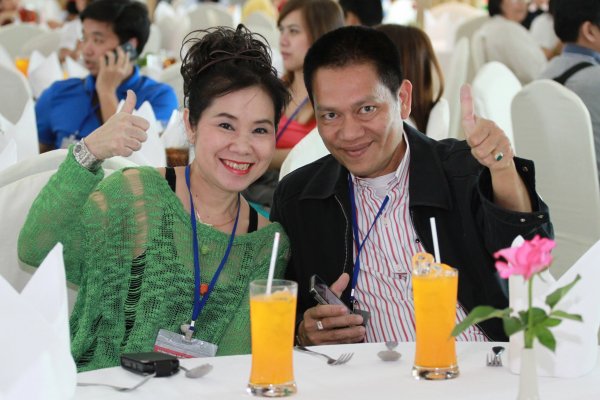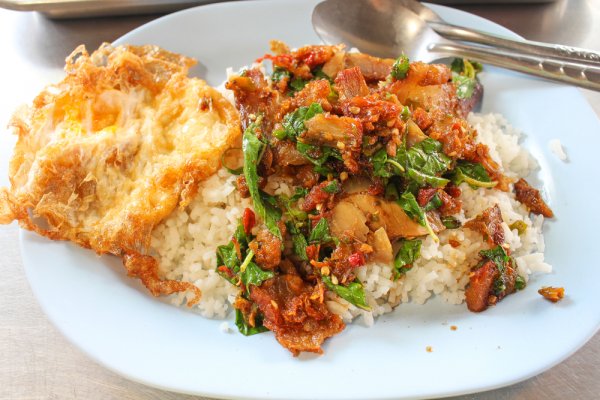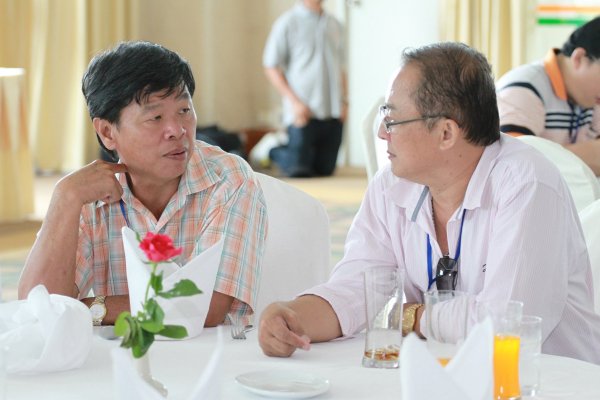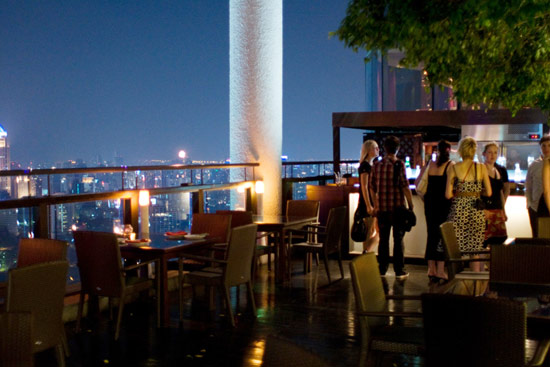Business Culture: Business Entertaining
Activities
Thais are known as amiable and hospitable hosts. Most will go out of their way to make sure the visitor has a good time during a visit. Be careful about making casual remarks about what you want to see or do during your stay, as you may find your Thai host going out of his or her way to see you get your wish. Your Thai counterpart will most likely invite you to a business lunch or dinner to get to know you, as well as to celebrate a business deal. Other types of business entertainment activities in Thailand including playing golf and visiting the infamous nightlife scene. Do not overindulge: some Thai businesspeople use the art of entertaining to gain the upper hand in business negotiations. However, most Thais simply want the visitor to enjoy their country, and will invite the visitor to elaborate meals at restaurants or their homes.
Thai food is a world-renowned cuisine found in many parts of the world. While it is traditionally fairly hot and spicy, it also incorporates a wide variety of sweet flavors and fruits. Some of the most common Thai staples include rice, noodles, coconut, papaya, mangoes, pineapple, and jackfruit. Rather than dried herbs, most Thai dishes incorporate fresh herbs such as lemongrass, cilantro, and basil. Some popular regional dishes include pad Thai (stir-fried rice noodles with other ingredients such as peanuts, bean sprouts, and egg), tom yam (a coconut milk soup), curries made with coconut milk, tom yum goong (shrimp soup made with red chilies), and cucumber salad. Some popular desserts include sweet sticky rice with mangoes and salim (sweet noodles in coconut milk). Alcohol is readily available in most Thai restaurants, and some of the most popular regional drinks include local beer Singha, local whiskey Mekhong, local rum SangSom, tea, and coffee.
Etiquette
Visitors should plan to arrive to most social engagements on time. When dining out, s/he who extends the invitation is the host, and pays the bill; splitting the check is not common and is actually considered to be rude in Thailand. Visitors should always step over thresholds, rather than on them. While the fork and spoon are the common eating utensils, some noodles and Chinese foods will be eaten with chopsticks. Hold the spoon in your right hand and the fork in your left hand, and use the fork to guide food onto the spoon. Use your right hand fingers when eating sticky rice. Visitors may begin eating after the food is served, and should leave a little food on their plates to indicate they are full. However, never leave rice on your plate, and never take the last bite from the serving bowl.
If you are invited to your Thai counterpart's home for a meal, look to see if his or her shoes are off when he or she answers the door. If they are off, remove yours at the door. Always bring a gift to the host or hostess. Some appropriate gifts include fine quality chocolates, flowers, cakes, liquor, candy, or a basket of fruit. Never give knives, scissors, handkerchiefs, or perfumes. Avoid giving carnations or marigolds, as they are associated with funerals. Always wrap the gift nicely, and do not expect the recipient to open it in front of you.
Visitors should always treat monks with respect, and women travelers should never touch a monk or his robe. When making dinner conversation, stick to noncontroversial subjects such as sports or local tourist spots. Do not bring up politics, the monarchy, national security, or anything that would offend your hosts' national pride. At casual, informal dinner events, men may wear short-sleeved shirts, while women may wear casual dresses, long skirts, or slacks. At most business dinners, most men wear slacks and jackets, while women wear modest professional outfits, donning suits or pairing skirts or slacks with non-revealing blouses.
Copyright © 1993—2025 World Trade Press. All rights reserved.

 Thailand
Thailand 



